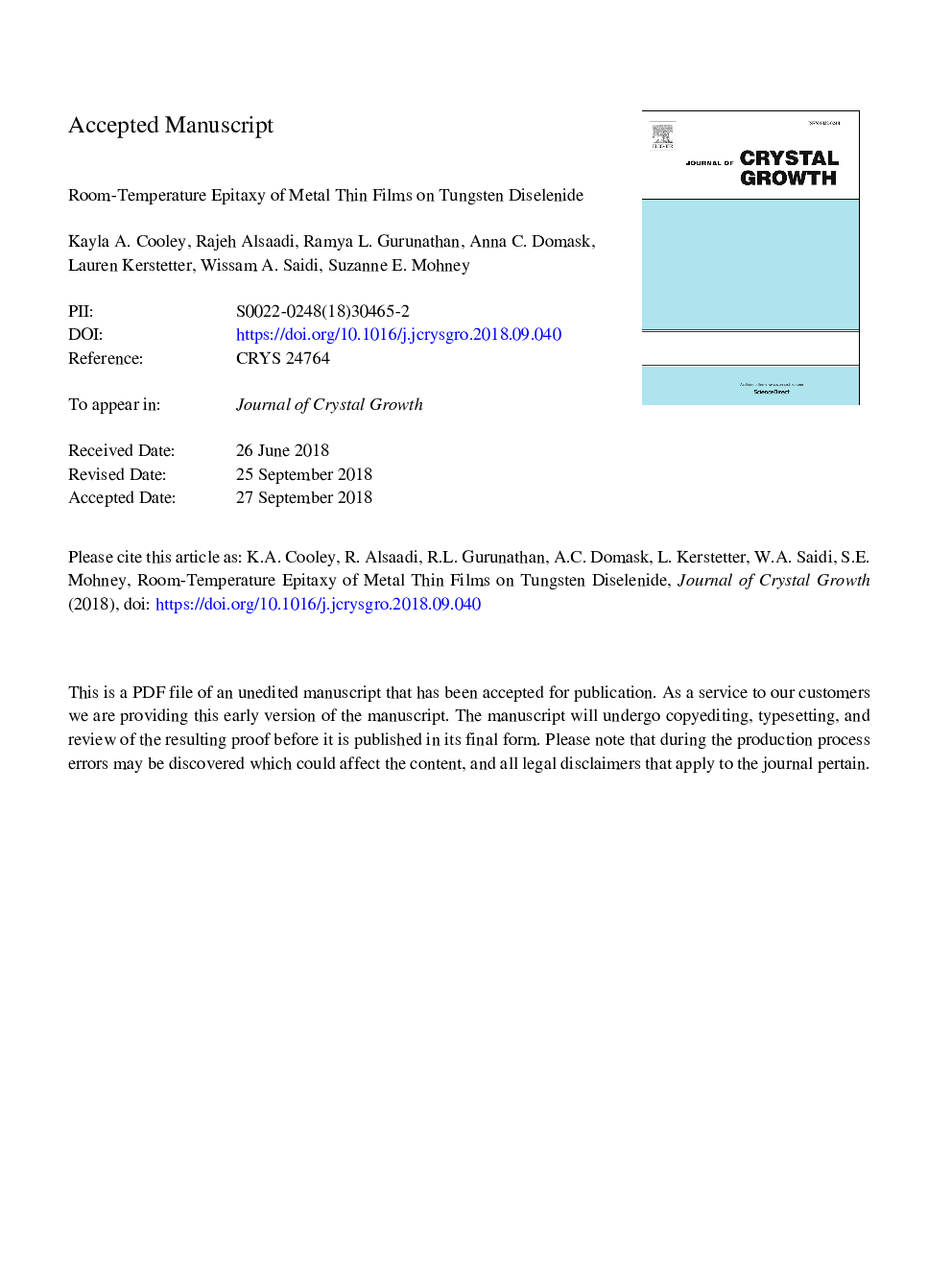| Article ID | Journal | Published Year | Pages | File Type |
|---|---|---|---|---|
| 11011025 | Journal of Crystal Growth | 2019 | 28 Pages |
Abstract
The orientation of selected metals (Pd, Ni, Al, and Co) deposited on WSe2 by physical vapor deposition was examined using transmission electron microscopy and selected area electron diffraction. We discovered that Ni demonstrates room-temperature epitaxy, similarly to other face centered cubic (FCC) metals Au, Ag, and Cu. These epitaxial metals exhibit the following orientation relationship, where M stands for metal: M (111) || WSe2 (0001); M [22¯0] || WSe2 [112¯0]. Hexagonally close-packed Co, and FCC Pd and Al, were not epitaxial on deposition; however, Pd became epitaxial after annealing at 673â¯K for 5â¯h. To uncover critical variables for epitaxial growth, we correlated our experimental work and reports from the literature on Cu, Ag, and Au with density functional theory calculations of the energetics of metal atoms on the surface of WSe2 and thermodynamic calculations of metal-W-Se phase equilibria. Furthermore, we compared the findings to our previous work on metal/MoS2 systems to draw conclusions more generally applicable to epitaxial growth of metals on transition metal dichalcogenides (TMDs). We observed that epitaxy of metals on TMDs can occur when there is a match in crystallographic symmetry, even with a large lattice mismatch, and it is favored by metals exhibiting a low diffusion barrier on the TMD surface. However, reaction processes between the metal and WSe2 can prevent epitaxy even when the other factors are favorable, as occurred for Al/WSe2 with the formation of aluminum selenide, tungsten aluminide, and elemental tungsten. Consideration of crystallographic symmetry, surface diffusion barriers, and reactivity can be used to predict room-temperature epitaxy in other metal/TMD systems.
Related Topics
Physical Sciences and Engineering
Physics and Astronomy
Condensed Matter Physics
Authors
Kayla A. Cooley, Rajeh Alsaadi, Ramya L. Gurunathan, Anna C. Domask, Lauren Kerstetter, Wissam A. Saidi, Suzanne E. Mohney,
